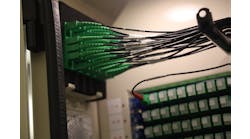Energy systems serving airports could benefit from microgrids, but this is not a common solution in the sector. Mehdi Ganji, smart cities vice president at Willdan Energy Solutions, discusses the barriers and solutions to airport microgrids in an interview with Yasmin Ali, Microgrid Knowledge contributor.
What energy issues do airports face, and what types of solutions do they currently use?
Mehdi Ganji, smart cities vice president, Willdan Energy Solutions
Mehdi Ganji: Airports need an energy supply for all sorts of applications — heating and cooling, lighting, entertainment, electric trains and cargo cars, and more importantly control and aviation systems. If the energy supply is lost, all of these systems are negatively affected, impacting the passengers.
Airports use back-up diesel generators, but they are not operated frequently and sometimes not maintained properly. Some airports are moving towards a microgrid solution step by step, but no airport in the world has adopted a comprehensive and standardized microgrid solution.
San Diego International Airport has installed 5.5 MW of solar PV, contracted 2 MW/4 MWh of battery storage, and configured their medium voltage electricity distribution loop to enable these distributed energy resources (DERs) to be economically dispatched. They are currently not pursuing a comprehensive microgrid control system. This, alongside the lack of enough on-site generation and storage capacity, means islanding of the airport is not possible.
Why is a microgrid a suitable energy solution for an airport?
MG: A microgrid can provide an economical, reliable and resilient energy supply. Atlanta International Airport’s 11-hour outage caused nearly 1,400 flights to be canceled, with huge financial consequences. La Guardia Airport, Los Angeles International Airport, John Wayne Airport, and very recently Salt Lake City International Airport have all suffered power disruptions. These events all highlight the importance of energy reliability and resiliency for airports. With a microgrid, these airports would have seamlessly transitioned into island mode when the power failure occurred, allowing them to continue normal operations.
With 2.7 million passengers passing through airports every day, a tremendous amount of heating and cooling is required. Other types of distributed generation, like combined heat and power and fuel cells, can meet this thermal load while increasing the efficiency of the energy system. Electricity is produced as a by-product, increasing reliability and resiliency.
In addition, the large electricity demand and the potential for DER deployment can make an airport a major ancillary service provider to the power grid, bringing economic benefits for the airport.
Why haven’t microgrids been deployed at airports yet? What are the barriers and challenges?
MG: Regulatory and permitting, as well as technical barriers, are at play. Airports are complex; they serve multiple interdependent energy and transportation end-users like passengers, businesses, airlines, cargo companies and in some cases governments. Different types of airports are managed by different jurisdictions. These could be national, regional or local. Each of these jurisdictions has different planning and operating requirements, making the standardization of microgrid solutions challenging from a regulatory perspective.
The lack of an airport standard microgrid system development framework introduces risks, so key decision makers in the airport sector are reluctant to discuss a solution. Another major barrier is the lack of a viable operating system to provide regulatory bodies like the utilities and FAA with real-time visibility into the airport infrastructure. The airport operations and maintenance workforce, who are deeply familiar with existing infrastructure, are slow to buy into and accept microgrid deployment.
How can these barriers be overcome?
MG: One way is to start small, with pilot projects. San Diego International Airport, for example, started with 3.3 MW of solar PV in 2014. They are slowly adding to their energy system, and could gradually move towards a microgrid. It’s a good way to prove the concept works on a small scale before rolling out larger projects. A publicly funded pilot project could test a microgrid at an airport and define the requirements and challenges to mitigate the risk. It is also an opportunity to train the infrastructure system operators to operate and maintain microgrid systems.
It’s important to set up working groups to educate and bring the airport management and decision makers from the industry, Federal and regional levels along on the journey
What first step should an airport take if they are thinking about microgrids?
MG: If you’re the airport management or decision maker, the first step is to revise the airport energy master plan beyond the financial benefits of energy efficiency to reflect your airport’s resilience and reliability needs. This should highlight the magnitude of losses that can be incurred from having a non-resilient or unreliable energy supply.
It should also identify the gaps between the current status and desired level of resiliency and reliability. The next step is to conduct a feasibility study to determine how to fill these gaps, the suitability of a microgrid, and DER deployment needs.
Mehdi Ganji is the smart cities vice president at Willdan Energy Solutions and smart city R&D committee chair at IEEE. Connect with Mehdi on LinkedIn.







